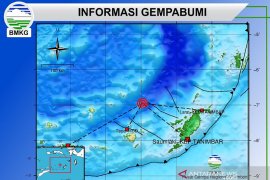The early indication is that things sitting higher up on the water could potentially move across the Pacific Ocean quicker than we had originally thought.Seattle (ANTARA News/Reuters) - An empty Japanese fishing boat drifting off the coast of western Canada could be the first wave of 1.5 million tons of debris heading toward North America from Japan`s tsunami last March.
The wreckage from flattened Japanese coastal towns - including refrigerators, washing machines, televisions, roofs and fishing nets - is heading inexorably east across the Pacific and could arrive sooner than expected, according to the U.S. National Oceanic and Atmospheric Administration.
"The early indication is that things sitting higher up on the water could potentially move across the Pacific Ocean quicker than we had originally thought," said Nancy Wallace, director of NOAA`s Marine Debris Program, which had forecast the appearance of tsunami debris on North American shores only in 2013.
"Those higher-wind, quicker moving items may actually be onshore much sooner - pretty much now."
On March 20, Canada`s transport department spotted what it said was an empty Japanese fishing vessel 150 nautical miles south of the Queen Charlotte Islands, adjacent to the main coast of British Columbia.
The ship has been declared a hazard to shipping, but Canada has not said what - if anything - it will do with it. The country`s Coast Guard said it will take action only if fuel spills from the ship, which is not likely.
The so-called ghost ship is the first major piece of evidence that Japanese tsunami debris is heading to the United States.
"It does confirm that debris generated by the tsunami will make landfall on the west coast of North America," said Nicholas Mallos, a conservation biologist and marine debris specialist at the independent Ocean Conservancy, which monitors the problem of Ocean trash.
"However, what the quantity of that debris is, what it looks like, all of those questions are still largely unanswered."
The NOAA, which is part of the U.S. Department of Commerce, initially expected to find debris hitting the northern Hawaiian islands this winter and moving slowly onto Alaska, Canada and the U.S. West Coast next year. But those forecasts, made shortly after the tsunami on limited historical current and wind models, are proving inaccurate.
The agency is finding that debris is moving north of Hawaii`s northernmost points, and making its way to the continent ahead of schedule, said Wallace. It is now tweaking its forecast to account for new material, such as analysis of recent oil spills and how wind will affect some objects more than others.
"Right now, we are trying to get that methodology of the new models validated by peer review experts," she said.
A magnitude 9.0 earthquake off Japan`s northeast coast on March 11, 2011, triggered a 75-foot (23-metre) wall of water that flattened waterfront towns, killing 16,000. Three thousand people are still unaccounted for.
(C003)
Editor: Ella Syafputri
Copyright © ANTARA 2012











